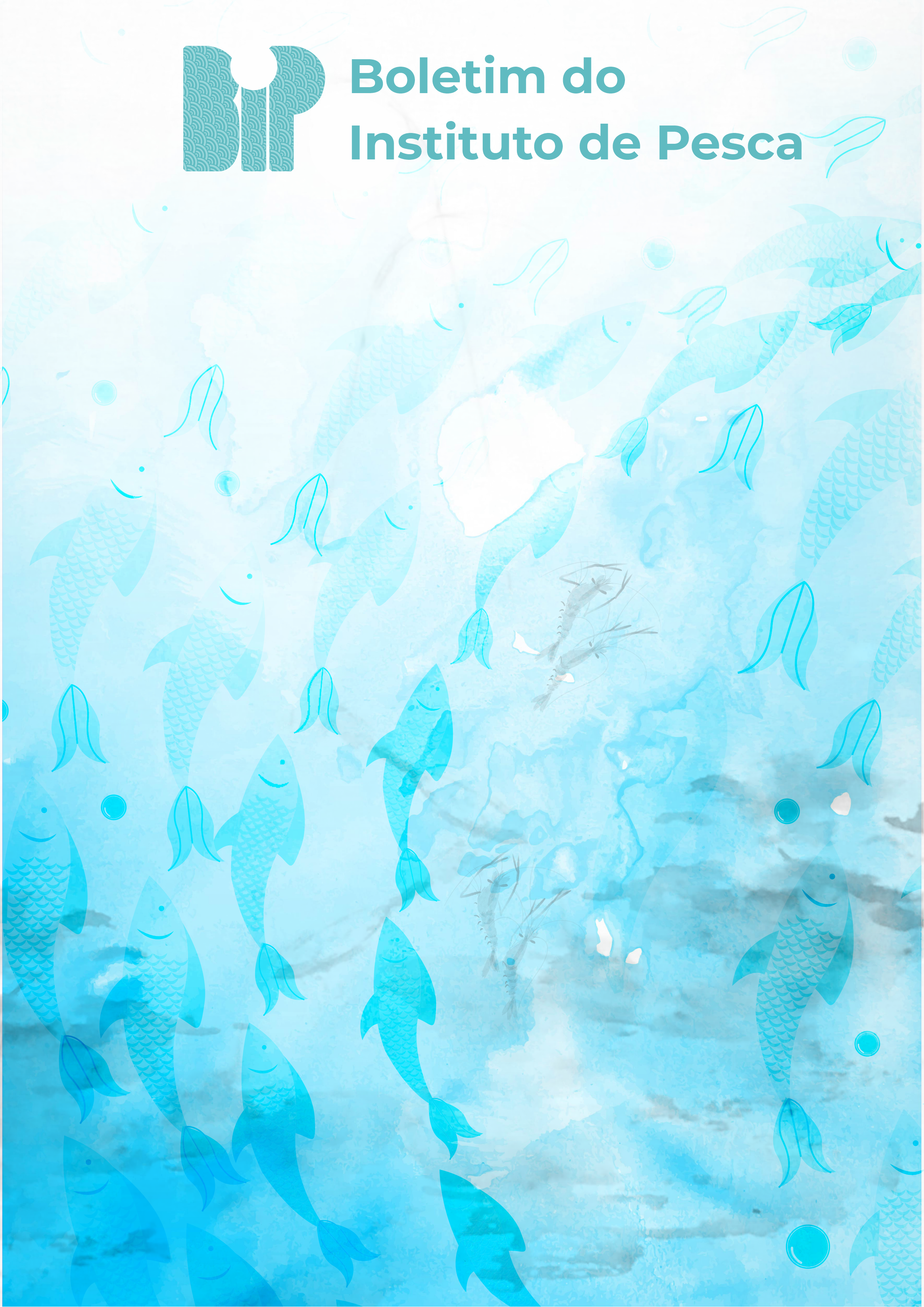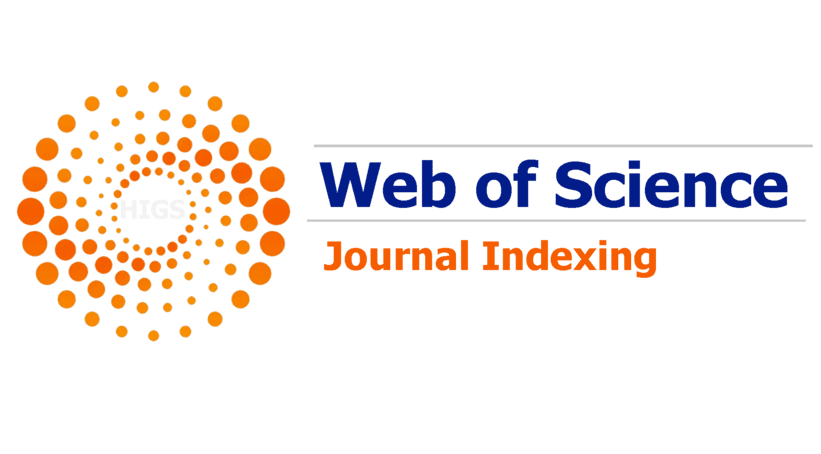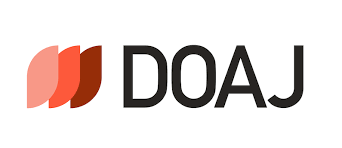Os aquafeeds comerciais podem melhorar o valor nutricional do camarão-de-salmoura? Composição proximal e perfil lipídico de melhoradores alternativos
DOI:
https://doi.org/10.20950/1678-2305/bip.2024.50.900Palavras-chave:
Artemia, Aquicultura, Teor de proteínas, Perfil de ácidos graxosResumo
Este estudo aborda a deficiência nutricional na biomassa de Artemia adulta, explorando enriquecedores alternativos disponíveis no Brasil. Avaliando ração comercial (Polinutre Poli Camarão 400PL) e uma emulsão lipídica (BioViv HUFA Continum), Artemia adultas foram submetidas a sete protocolos de enriquecimento. A análise da composição revelou melhorias significativas na densidade energética e no teor de proteína para Artemia alimentada exclusivamente com ração comercial (CF100), com valores muito semelhantes aos dos principais produtos comerciais disponíveis, incluindo Algamac-3050, Super Selco, e DHA Protein Selco, além de diversas opções alternativas, como farinha de arroz e soja, esterco suíno e uma mistura de microalgas. Efeitos do tempo de enriquecimento foram observados a partir de 12 horas, mostrando impactos positivos no acúmulo de proteínas. O conteúdo lipídico atingiu o pico às 12 horas, seguido por uma diminuição às 24 horas. O estudo sugere que as alternativas mais eficazes entre as avaliadas são os tratamentos CF100 e LE12, mas que estudos adicionais são necessários para avaliar se a combinação de protocolos, fornecendo altos níveis de proteína enquanto mantêm um perfil lipídico completo.
Referências
Anh, N. T. N., Van Hoa, N., Van Stappen, G., & Sorgeloos, P. (2009). Effect of different supplemental feeds on proximate composition and Artemia biomass production in salt ponds. Aquaculture, 286(3-4), 217-225. https://doi.org/10.1016/j.aquaculture.2008.09.030
AOAC International (1965). Official methods of analysis (10th ed.). AOAC International.
Balachandar, S., & Rajaram, R. (2019). Influence of different diets on the growth, survival, fecundity and proximate composition of brine shrimp Artemia franciscana (Kellog,1906). Aquaculture Research, 50(2), 376-389. https://doi.org/10.1111/are.13882
Bengtson, D. A., Léger, P., & Sorgeloos, P. (2018). Use of Artemia as a food source for aquaculture. In: Browne, R. A. (Ed.), Artemia biology (pp. 255-286). CRC Press.
Christie, W. W. (2003). Preparation of lipid derivatives. In: Christie, W. W., & Han, X. (Eds.), Lipid analysis: isolation, separation, identification and structural analysis of lipids (vol. 15, pp. 205-224). Elsevier.
Conceição, L. E.., Yúfera, M., Makridis, P., Morais, S., & Dinis, M. T. (2010). Live feeds for early stages of fish rearing. Aquaculture Research, 41(5), 613-640. https://doi.org/10.1111/j.1365-2109.2009.02242.x
Dendrinos, P., & Thorpe, J. P. (1987). Experiments on the artificial regulation of the amino acid and fatty acid contents of food organisms to meet the assessed nutritional requirements of larval, post-larval and juvenile Dover sole [Solea solea (L.)]. Aquaculture, 61(2), 121-154. https://doi.org/10.1016/0044-8486(87)90364-4
Fábregas, J., Otero, A., Domínguez, A., & Patiño, M. (2001). Growth rate of the microalga Tetraselmis suecica changes the biochemical composition of Artemia species. Marine Biotechnology, 3, 256-263. https://doi.org/10.1007/s101260000074
Folch, J., Lees, M., & Sloane Stanley, G. H. (1957). A simple method for the isolation and purification of total lipids from animal tissues. Journal of Biological Chemistry, 226(1), 497-509.
Izquierdo, M. S., Fernandez-Palacios, H., & Tacon, A. G. J. (2001). Effect of broodstock nutrition on reproductive performance of fish. Aquaculture, 197(1-4), 25-42. https://doi.org/10.1016/S0044-8486(01)00581-6
Joshua, W. J., Kamarudin, M. S., Ikhsan, N., Yusoff, F. M., & Zulperi, Z. (2022). Development of enriched Artemia and Moina in larviculture of fish and crustaceans: a review. Latin American Journal of Aquatic Research, 50(2), 144-157. https://doi.org/10.3856/vol50-issue2-fulltext-2840
Kandathil Radhakrishnan, D., AkbarAli, I., Schmidt, B. V., John, E. M., Sivanpillai, S., Thazhakot Vasunambesan, S. (2020). Improvement of nutritional quality of live feed for aquaculture: An overview. Aquaculture Research, 51(1),1-17. https://doi.org/10.1111/are.14357
Kara, M. H., Bengraine, K. A., Derbal, F., Chaoui, L., & Amarouayache, M. (2004). Quality evaluation of a new strain of Artemia from Chott Marouane (Northeast Algeria). Aquaculture, 235(1-4), 361-369. https://doi.org/10.1016/j.aquaculture.2004.02.016
Lavens, P., & Sorgeloos, P. (2018). Production of Artemia in culture tanks. In: Browne, R. A., Sorgeloos, P., & Trotman, C. N. A. (Eds.), Artemia biology (pp. 317-350). CRC Press.
Lipscomb, T. N., Patterson, J. T., Wood, A. L., Watson, C. A., & DiMaggio, M. A. (2020). Larval growth, survival, and partial budget analysis related to replacing Artemia in larval culture of six freshwater ornamental fishes. Journal of the World Aquaculture Society, 51(5), 1132-1144. https://doi.org/10.1111/jwas.12707
Maldonado-Montiel, T. D., & Rodríguez-Canché, L. G. (2005). Biomass production and nutritional value of Artemia sp. (Anostraca: Artemiidae) in Campeche, México. Revista de Biología Tropical, 53(3-4), 447-454.
Marinho-Soriano, E., Azevedo, C. A. A., Trigueiro, T. G., Pereira, D. C., Carneiro, M. A. A., & Camara, M. R (2011). Bioremediation of aquaculture wastewater using macroalgae and Artemia. International Biodeterioration & Biodegradation, 65(1), 253-257. https://doi.org/10.1016/j.ibiod.2010.10.001
Moraiti‐Ioannidou, M., Castritsi‐Catharios, J., Miliou, H., & Kotzamanis, Y. P. (2007). Fatty acid composition and biometry of five Greek Artemia populations suitable for aquaculture purposes. Aquaculture Research, 38(15), 1664-1672. https://doi.org/10.1111/j.1365-2109.2007.01835.x
Novelli, B., Otero-Ferrer, F., Diaz, M., Socorro, J. A., Caballero, M. J., Domínguez, L. M., & Moyano, F. J. (2016). Digestive biochemistry as indicator of the nutritional status during early development of the long snouted seahorse (Hippocampus reidi). Aquaculture, 464, 196-204. https://doi.org/10.1016/j.aquaculture.2016.06.037
Nur, F. A. H., Christianus, A., Ching, F. F., Shapawi, R., Saad, C. R., & Senoo, S. (2016). Reproductive performance of seahorse, Hippocampus barbouri (Jordan and Richardson 1908) in control condition. Journal of Survey in Fisheries Sciences, 17-33. https://doi.org/10.18331/SFS2016.2.2.2
Planas, M., Chamorro, A., Quintas, P., & Vilar, A. (2008). Establishment and maintenance of threatened long-snouted seahorse, Hippocampus guttulatus, broodstock in captivity. Aquaculture, 283(1-4), 19-28. https://doi.org/10.1016/j.aquaculture.2008.06.023
Planas, M., Olivotto, I., González, M. J., Laurà, R., Angeletti, C., Amici, A., & Zarantoniello, M. (2021). Pre-breeding Diets in the Seahorse Hippocampus reidi: how do they affect fatty acid profiles, energetic status and histological features in newborn? Frontiers in Marine Science, 8, 688058. https://doi.org/10.3389/fmars.2021.688058
Planas, M., Olivotto, I., González, M. J., Laurà, R., & Zarantoniello, M. (2020). A multidisciplinary experimental study on the effects of breeders’ diet on newborn seahorses (Hippocampus guttulatus). Frontiers in Marine Science, 7, 638. https://doi.org/10.3389/fmars.2020.00638
Planas, M., Silva, C., Quintas, P., Chamorro, A., & Piñero, S. (2017). Ongrowing and enhancement of n-3 HUFA profile in adult Artemia: short-vs long-time enrichment. Journal of Applied Phycology, 29, 1409-1420. https://doi.org/10.1007/s10811-016-1016-z
Pratoomyot, J., Leethochavalit, S., Siranonthana, N., & Choosri, S. (2016). Preliminary study on the nutritional content of Artemia fed mixed microalgae diets and their effect on the reproduction of captive bred green mandarinfish (Synchiropus splendidus Herre, 1927). Burapha Science Journal, 152-165.
Ramos-Llorens, M., Ribes-Navarro, A., Navarro, J. C., Hontoria, F., Kabeya, N., & Monroig, Ó. (2023). Can Artemia franciscana produce essential fatty acids? Unveiling the capacity of brine shrimp to biosynthesise long-chain polyunsaturated fatty acids. Aquaculture, 563(part 1), 738869. https://doi.org/10.1016/j.aquaculture.2022.738869
Ruiz, O., Amat, F., & Navarro, J. C. (2008). A comparative study of the fatty acid profile of Artemia franciscana and A. persimilis cultured at mesocosm scale. Journal of Experimental Marine Biology and Ecology, 354(1), 9-16. https://doi.org/10.1016/j.jembe.2007.09.015
Saini, R. K., Prasad, P., Shang, X., & Keum, Y. S. (2021). Advances in lipid extraction methods—a review. International Journal of Molecular Sciences, 22(24), 13643. https://doi.org/10.3390/ijms222413643
Samat, N. A., Yusoff, F. M., Rasdi, N. W., & Karim, M. (2020). Enhancement of live food nutritional status with essential nutrients for improving aquatic animal health: A review. Animals, 10(12), 2457. https://doi.org/10.3390/ani10122457
Segade, Á., Robaina, L., Novelli, B., Otero‐Ferrer, F., & Molina Domínguez, L. (2016). Effect of the diet on lipid composition and liver histology of short snout seahorse Hippocampus hippocampus. Aquaculture Nutrition, 22(6), 1312-1319. https://doi.org/10.1111/anu.12341
Tacon, A. G., & Metian, M. (2015). Feed matters: satisfying the feed demand of aquaculture. Reviews in Fisheries Science & Aquaculture, 23(1), 1-10. https://doi.org/10.1080/23308249.2014.987209
Wang, Y. Y., Liang, X. F., He, S., Tang, S. L., & Peng, D. (2022). The potential use of Artemia for larval rearing of mandarin fish (Siniperca chuatsi). Aquaculture Reports, 25, 101216. https://doi.org/10.1016/j.aqrep.2022.101216
Wee, S., Loong, S., Ng, N. S., & Cabana, F. (2021). Artemia as a sustainably cultured live feed for ornamental fish in zoological institutions with immunostimulant properties
when bioencapsulated with spirulina (Arthrospria platensis). Journal of Zoo and Aquarium Research, 9(2), 110-115. https://doi.org/10.19227/jzar.v9i2.546
Woods, C. M. (2003). Effects of varying Artemia enrichment on growth and survival of juvenile seahorses, Hippocampus abdominalis. Aquaculture, 220(1-4), 537-548. https://doi.org/10.1016/S0044-8486(02)00639-7
Woods, C. M., & Valentino, F. (2003). Frozen mysids as an alternative to live Artemia in culturing seahorses Hippocampus abdominalis. Aquaculture Research, 34(9), 757-763.https://doi.org/10.1046/j.1365-2109.2003.00882.x
Downloads
Publicado
Edição
Seção
Licença
Copyright (c) 2024 Bruna Maganhe, Eduardo Gomes Sanches

Este trabalho está licenciado sob uma licença Creative Commons Attribution 4.0 International License.










